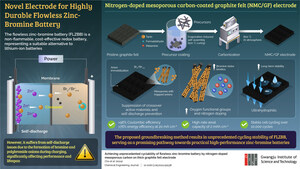Researchers at the GIST Develop Design Scheme for Fiber Reinforced Composites
GWANGJU, South Korea, Feb. 25, 2022 /PRNewswire/ -- Fiber reinforced composites (FRCs), which are engineering materials comprising stiff fibers embedded in a soft matrix, typically have a constant fiber radius that limits their performance. Now, researchers from the Gwangju Institute of Science and Technology in Korea have developed a scheme for AI-assisted design of FRC structures with spatially varying optimal fiber sizes, making FRCs more lightweight without compromising their mechanical strength and stiffness, which will reduce the energy consumption of cars, aircrafts, and other vehicles.
Fiber reinforced composites (FRCs) are a class of sophisticated engineering materials composed of stiff fibers embedded in a soft matrix. When properly designed, FRCs provide outstanding structural strength and stiffness for their weight, making them an attractive option for aircrafts, spacecrafts, and other vehicles where having a lightweight structure is essential.
Despite their usefulness, however, FRCs are limited by the fact that they are designed using fibers with a constant radius and a spatially-fixed fiber density, which compromises the trade-off between weight and mechanical strength. Simply put, currently available FRCs are, in fact, heavier than necessary to meet the application standards.
To tackle this issue, an international research team led by Professor Jaewook Lee of the Gwangju Institute of Science and Technology in Korea recently developed a new approach for the inverse design of FCRs with spatially-varying fiber size and orientation, also known as "functionally graded composites." The proposed method is based on a "multiscale topology optimization," which allows one to automatically find the best functionally graded composite structure given a set of design parameters and constraints.
"Topology optimization is an AI-based design technique that relies on computer simulation to generate an optimal structural shape instead of on the designer's intuition and experience," explains Prof. Lee, "On the other hand, a multiscale approach is a numerical method that combines the results of analyses conducted at different scales to derive structural characteristics." Unlike similar existing approaches that are limited to two-dimensional functionally graded composites, the proposed methodology can simultaneously determine the optimal three-dimensional composite structure alongside its microscale fiber densities and fiber orientations.
The team demonstrated the potential of their method through several computer-assisted experiments where various functionally graded composite designs with constant or varying fiber sizes were compared. The experiments included designs for a bell crank, a displacement inverter mechanism, and a simple support beam. As expected, the results showed improved performances in the designs with locally tailored fiber sizes. This paper was made available online on October 9, 2021, and published in Volume 279 of Composite Structures on January 1, 2022.
Many applications for vehicles, aircrafts, and robotics benefit from lightweight structures, and the proposed approach can now assist engineers to this end. However, the benefits can extend well beyond the target applications themselves. As Prof. Lee explains: "Our methodology could help develop more energy-efficient vehicles and machinery by weight reduction, which would reduce their energy consumption and, in turn, contribute towards achieving carbon neutrality."
An exciting prospect to entertain, for sure!
Reference
Title of original paper: Inverse design of three-dimensional fiber reinforced composites with spatially-varying fiber size and orientation using multiscale topology optimization
Journal: Composite Structures
DOI: https://doi.org/10.1016/j.compstruct.2021.114768
About the Gwangju Institute of Science and Technology (GIST)
Media contact:
Seulhye Kim
[email protected]
82 62 715 6253
SOURCE Gwangju Institute of Science and Technology

WANT YOUR COMPANY'S NEWS FEATURED ON PRNEWSWIRE.COM?
Newsrooms &
Influencers
Digital Media
Outlets
Journalists
Opted In




Share this article